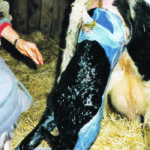
Stories by Heather Smith Thomas

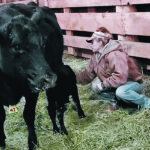
Hormones drive maternal bonding
Rising oxytocin levels trigger maternal behavior but a deficiency, particularly in first-time heifers, can cause problems
Most cows immediately care for and protect their newborn calves but some will be slow to mother, not by choice, but due to an imbalance or deficiency of hormones that trigger maternal behaviour. The bonding process of cow and calf is a complex blend of hormonal-induced and learned behaviour, the latter being the reason mature […] Read more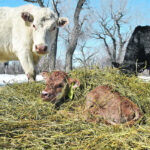
Prolapse treatment in cows depends on type of condition
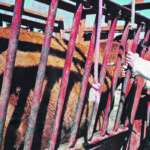
Pre-calving scours vaccine can save the lives of calves
Vaccinating cows for scours ahead of calving can build antibody levels in colostrum and increase calf health
Colostrum is key to calf health, particularly in the first weeks of life. However, preventing calfhood disease is a combination of many factors, including a clean environment and well-nourished, healthy cows with strong immunities. Vaccinating cows ahead of calving can help build antibody levels in cows’ colostrum, says Dr. Steve Hendrick of the Coaldale Veterinary […] Read more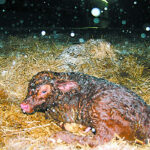
Backward, breech calves challenge to deliver
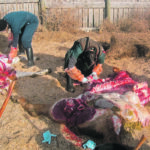
Necropsies help with disease control
Livestock producers sometimes balk at the expense, but a veterinarian says it can be good to know what’s behind a death
If an animal dies from an unknown cause, discovery of that cause can help avoid further deaths. Samples and photos sent to a veterinarian are a first step. The vet might determine whether the animal died from hardware, pneumonia, plant poisoning, liver flukes or some other problem that might be preventable. Findings of disease, parasites […] Read more
Manage cold stress to prevent illness
Producers are urged to monitor cattle feed quality, but providing protection from the wind is also an important factor
Cattle grow longer, thicker hair and put on a layer of fat to provide insulation and reduce heat loss as cold weather arrives. Increased metabolism and higher feed requirements help increase heat production so cattle withstand winter temperatures. However, cold stress can still be a factor, and management to minimize it will reduce risk of […] Read more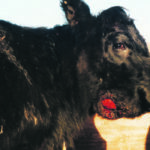
Lump jaw treatments vary depending on type
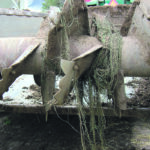
Bale net wrap, twine present health hazard for cows
Producers may never realize they have a problem unless a necropsy reveals net wrap or baling twine inside the animal
Use of net wrap on hay and straw bales carries risks to cattle. Dr. John Campbell, professor of large animal clinical sciences at the Western College of Veterinary Medicine, says some producers in recent years have lost cows that ingested net wrap left on bales or chopped in a processor. “This is probably not a […] Read more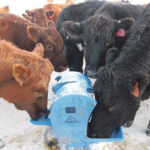
Nose pumps can help keep the water running
Constantly raising and lowering the system’s piston keeps water in the pipe from freezing in cold winter temperatures
Frozen water and frozen water systems can be a nightmare in cold weather. Jim Anderson, a rancher near Rimbey, Alta., solved his winter water problems 25 years ago by creating an innovative water system in which cattle pump water for themselves via shallow wells, water that never freezes even at -40 C. Anderson’s innovation uses […] Read more

